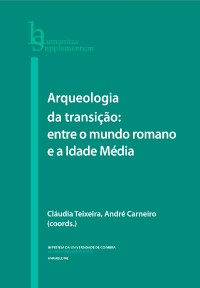Please use this identifier to cite or link to this item:
https://hdl.handle.net/10316.2/41861| Title: | Nos limites do Império: dinâmicas de povoamento na transição para a Antiguidade Tardia no Alto Alentejo | Other Titles: | In the limits of the Empire: settlement dynamics in the transition for Late Antiquity in Alto Alentejo | Authors: | Carneiro, André | Keywords: | Villa;settlement patterns;Late Antiquity;rural aristocracies;Alto Alentejo;Villa;redes de povoamento;Antiguidade Tardia;elites rurais;Alto Alentejo | Issue Date: | 2017 | Publisher: | Imprensa da Universidade de Coimbra | Journal: | http://hdl.handle.net/10316.2/41859 | Abstract: | Between the fifth and sixth centuries, the territory of the «Alto Alentejo» suffered profound modifications in its human settlement network. The dense network of sites that had characterized the Roman Empire changed: some of the more peripheral spaces seemed to be completely emptied; other spaces allow us to see the inverse movement, i.e., population concentration phenomena. Throughout this territory, the population pyramid that characterized the sites’ hierarchy in Roman times became more simplified, due to the disappearance of the small production units and to the consolidation of properties, which had become progressively enlarged. Being a region where, in imperial times, the urban network had no strong consolidation (at this stage of research we have few urbes registered), the study of the dynamics of the rural population is particularly significant to evaluate the prestige and power of the landowning elites. Thus, the purpose of this chapter is to examine specifically these phenomena in some of the large villae from Alto Alentejo. Entre os séculos V e VI o território do Alto Alentejo assiste a profundas alterações na sua rede de povoamento. A densa rede de sítios que havia caracterizado o Império romano modifica-se: alguns espaços, mais periféricos, parecem esvaziar‑se totalmente, e em outros assiste-se a fenómenos de concentração de povoamento, abandonando-se alguns locais em detrimento de outros. Por todo este território parece simplificar-se a pirâmide de povoamento que caracteriza a hierarquia de sítios em época romana, com o desaparecimento das pequenas unidades e a consolidação de algumas propriedades em ampliação progressiva. Sendo uma região onde em época imperial o tecido urbano estava pouco consolidado, com poucas urbs registadas no actual momento da investigação, o estudo das dinâmicas centradas no povoamento rural assume um especial interesse como forma de avaliação do prestígio e poder das elites fundiárias. Desse modo, além da tendência geral, observa‑‑se com particular atenção o que ocorre em algumas das maiores villae do Alto Alentejo. |
URI: | https://hdl.handle.net/10316.2/41861 | ISBN: | 978-989-26-1352-9 978-989-26-1353-6 (PDF) |
ISSN: | 2182‑8814 | DOI: | 10.14195/978-989-26-1353-6_2 | Rights: | open access |
| Appears in Collections: | Arqueologia da transição: entre o mundo romano e a Idade Média |
Files in This Item:
| File | Description | Size | Format | |
|---|---|---|---|---|
| nos_limites_do_imperio.pdf | 1.36 MB | Adobe PDF |  |
Items in DSpace are protected by copyright, with all rights reserved, unless otherwise indicated.
